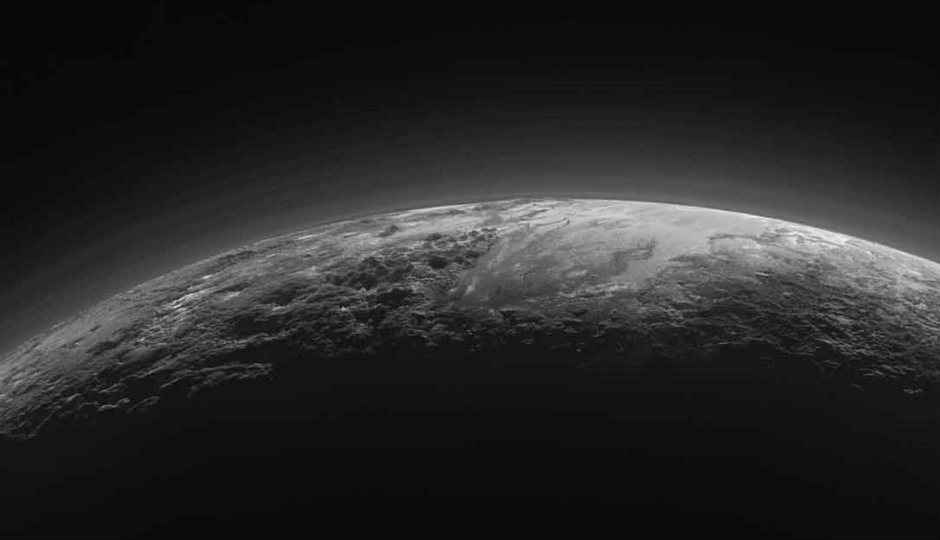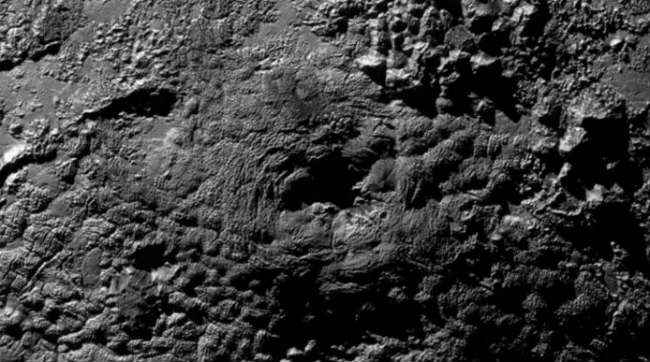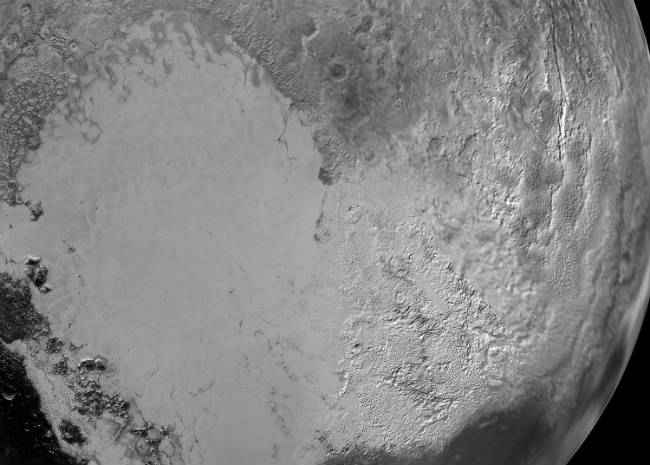The complex nature of Pluto and its surface

The interaction of the dwarf with its solar relatives is more complex than we thought; Papers released in Science by New Horizons researchers explain why.
Until the recent event of New Horizons getting its first glimpse of Pluto in July 2015, we knew very little about our distant, dwarf relative. With the recent array of closer images and data being relayed back to Earth, scientists began studying Pluto — its rocky surface, the thin, dissipating atmosphere and the impact of solar winds on it. Now, five papers detailing the planet have been published in Science, and elucidate the intricate complications of Pluto and its relation with the solar system.
The slight haze surrounding Pluto is an effect that has occurred out of harsh winds blowing over Pluto’s barren surface. These winds steadily corrode the surface, leading to dust particles being suspended in the atmosphere. Over time, and with a quieter atmospheric interaction with the planetary system, the particles get suspended over the surface. Diffraction of light through the dust particles lead to the shimmering haze, that we see on Pluto’s photos.
Pluto's cryovolcano craters
The entire atmosphere, in fact, acts differently than what we perceived. Initial studies and reports had suggested that the escape velocity of molecules from Pluto’s Nitrogen-rich atmosphere is to the order of 1027 molecules per second. However, a more detailed study has observed a cooling effect on the outer layers of Pluto’s atmosphere, that is possibly caused by the loose dust mentioned previously. The dust that makes the atmosphere nearly 70 degree Fahrenheit colder than previous estimates, absorbs and emits the incident solar rays back into space. These rays would have otherwise dissipated heat across the atmosphere and led to higher escape velocity of molecules. Every planet’s atmosphere has an escape velocity, because of which molecules dissipate into space at a steady rate. Pluto’s slower rate observed here explains more about the surface at its present form.
Another factor that can be attributed for the cooling effect on Pluto’s atmosphere is Hydrogen cyanide, detected by the Atacama Large Millimeter Array in Chile. The cooling factors also explain the younger Sputnik Planum zone on the planet, the glacial area on the western lobe of Pluto’s ‘heart’. Pluto has been geologically active for nearly 4 billion years. In comparison, Sputnik Planum is only 10 million years old, relaying an active glacial surface. This has been further reinstated by the presence of two cryovolcanoes. At their active peak, the cryovolcanoes spat molten ice from the interior core to the surface, leading to such glacial formations. Over time, these sublimated into the atmosphere, and were eventually lost into space. However, with the cooling agents at work in the atmosphere, the low rate of dissipation estimates that only about 6 centimeters of Nitrogen ice have been lost so far. This action has been a causing factor for sheets of ice that lay over the mountainous terrain of Pluto.
The younger glacial surface of Sputnik Planum
Such volcanic action explains the newer surface of Nitrogen ice, and points at a warmer core deeper into the planet. Recent studies have also spotted the resemblance of Pluto’s primary satellite, Charon, with that of Pluto’s. Along with this, the four smaller satellites, Styx, Nix, Kerberos and Hydra, have also shown signs of resemblance, contradicting previous studies that estimated their formation to the Kuiper Belt’s activities. Scientists assume that these satellites may have formed out of a planetary collision, that gave rise to the entire system of Pluto’s elaborate operation.
The New Horizons studies have shed light into much of Pluto’s mysterious ways, which are startlingly complex in areas. Further studies, in due course of time, may elucidate on the exact actions that had taken place in the course of Pluto’s history. With the planet showing incredible amounts of activity at the outermost point of the solar system, there may be even more to the glacial surface of Pluto than what we have discovered so far.







